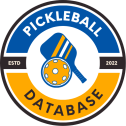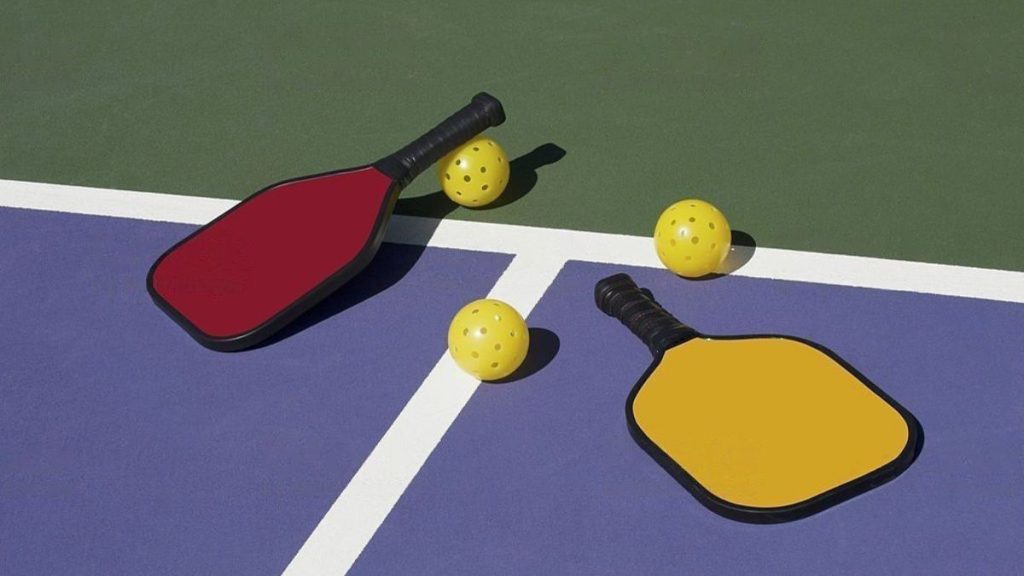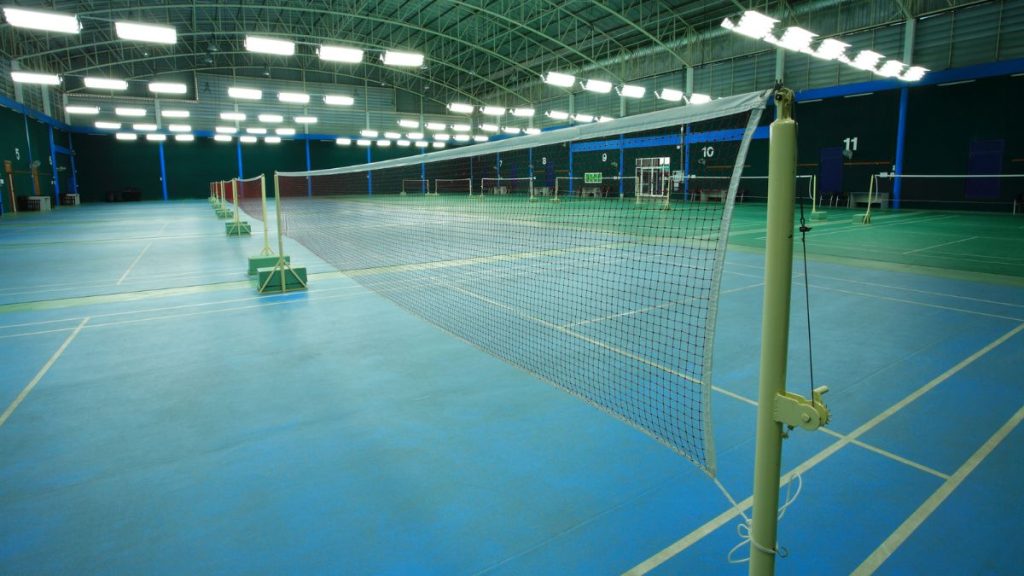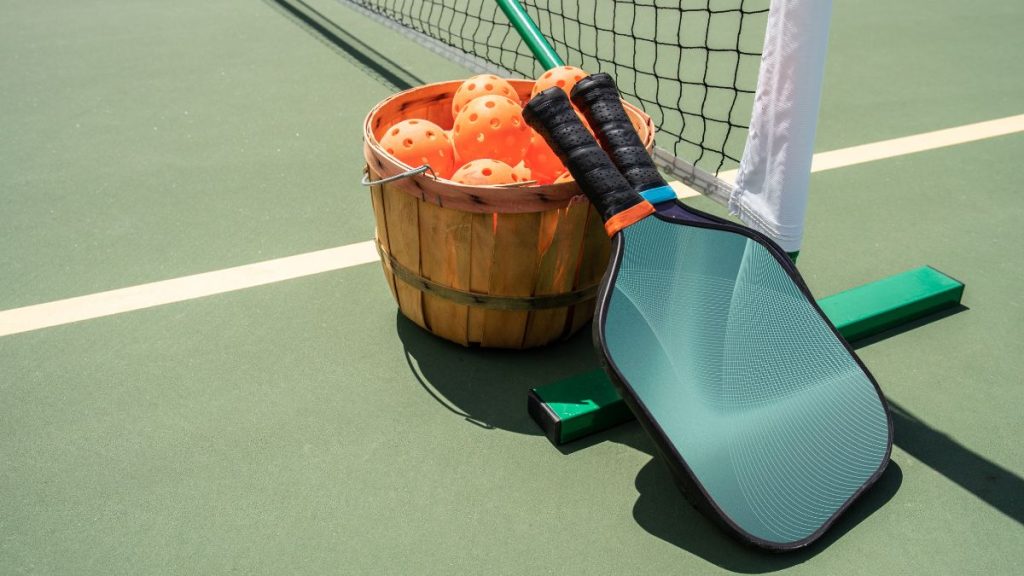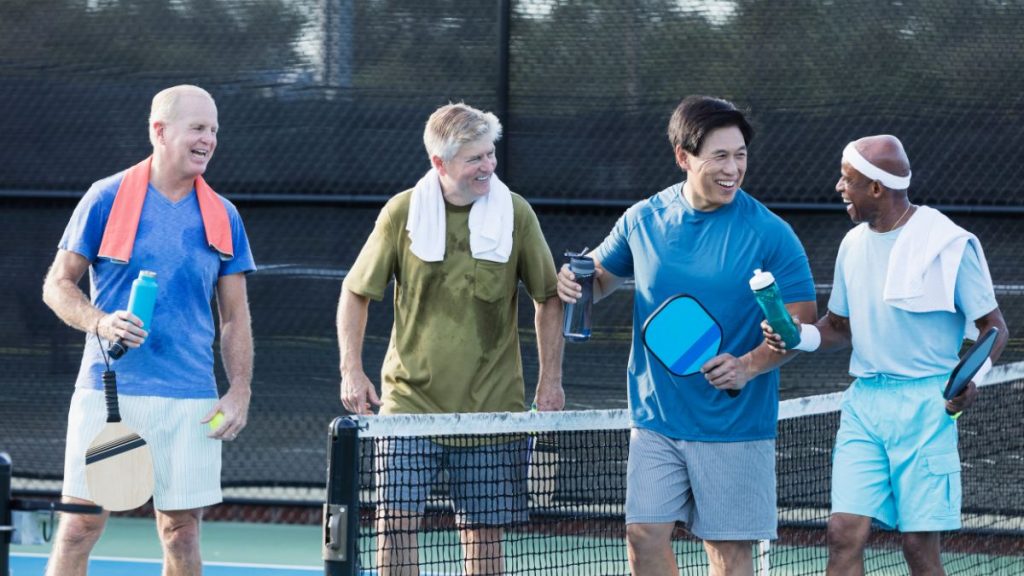Choosing which pickleball paddle to buy can be very confusing. It’s because paddles do not come in one standard shape. Pickleball has quickly evolved, and so have the pickleball paddles. Different paddle brands are constantly searching for the next best thing. Whether it is a powerful surface, a soft core, or a unique shape that gives you more power, pickleball paddle designers always search for something that can separate them from the pack. So, what are the different pickleball paddle shapes?
The top four pickleball paddle shapes are the elongated (thin) body shape which measures 16 ½ x 7 ¼ inches; the blade shape, which measures 17 x 6 ⅞ inches; the wide body shape, which measures 16 x 8 inches; and the classic paddle shape which measures 15 ¾ x 7 ⅞ inches.
One of the great things about pickleball is you are given the freedom to experiment. Rather than having a standard dimension, the USA Pickleball Association (USAPA) requires manufacturers that the length + width of the paddle should not go beyond 24 inches. Having this in mind, your options are infinite. Keep reading to know your available options to find that perfect paddle.
Is There a Difference in Pickleball Paddles?
The pickleball paddle is one of the most important pieces of equipment in your entire game. Keep in mind that it can greatly impact how you play. At the same time, it can also greatly impact how your body feels after playing a game. As pickleball becomes more and more popular, more and more paddles have emerged. So, how can you know which paddle is right for you?
When searching for pickleball paddles, there are three major things that you need to look into. These are the grip size, weight, and materials.
Grip Size
When choosing a grip size, be sure that it fits your hand. If the paddle’s grip is extremely large, it could easily slip in your hand and result in injuries. On the other hand, smaller grips allow you to do more wrist action, leading to more spin and control, while a larger grip offers more stability.
Weight
One of the essential factors to consider when choosing a pickleball paddle is the weight. The fact is, weight is just the same as feel. It would be best to determine how the paddle feels as you pick it up, hold, and swing it with your hand.
The weight of pickleball paddles can range between six ounces to 14 ounces. Remember that weight can affect control and power. Heavier paddles give you more power but less control. A heavier paddle can likely cause tiredness in your arm and elbow strain. On the other hand, lighter paddles provide you with more control but less power. It would be best if you started using a paddle that is not very heavy until you develop more strength.
Materials
The three major materials used for pickleball paddles are composite, wood, and graphite. Composite paddles come in different sizes and weights; at the same time, they have a mid-range price. The heaviest paddles are wood paddles, and they are also less expensive. New players or players having doubts can easily get tempted to buy a wood paddle. Although this is ok, however, the weight should also be considered. The most expensive are graphite paddles; however, they are also powerful and lighter.
Is Graphite or Carbon Fiber Better for Pickleball Paddle?
Carbon Fiber Paddles
Carbon fiber is commonly used in various applications because it is much lighter and stronger than steel. It is used in manufacturing bicycles, airplanes, space shuttles, race cars, and even tennis racquets. Now, it is also used for making pickleball paddles.
Perhaps, you might be asking why? Well, it’s because carbon fiber is extremely stiff. Due to its stiffness, carbon fiber is considered the ideal material for the cores and facings of pickleball paddles since it can give you ultimate control over where you want your ball to go.
Stiffness is a certain material characteristic that can prevent deflection or deformation. Hence, when you use a carbon fiber pickleball paddle to hit the ball, it is less likely that the ball will deflect in the direction you don’t intend. This means that you will have more true shots and fewer mishits.
Today, most pickleball paddles use a honeycomb core made of polymer, making them quite similar. These cores are placed between two thin layers of material, carbon fiber, graphite, or fiberglass, making them unique. The stiffness-to-weight ratio of carbon fiber is greater than fiberglass. Additionally, carbon fiber is also much stronger compared to graphite.
Graphite Paddles
Most people associate weight with power. They believe that there is more power in a heavier paddle. However, this is not the case with graphite. Since it is a very strong material, you can get a lot of power even on its very thin layer. Graphite paddles might be light, yet they are as powerful as heavier paddles.
This is why most serious and professional pickleball players choose a graphite pickleball paddle. But even if you are not a pro, you can still use graphite pickleball paddles since they are strong and light. They can offer you a powerful boost and fast action. Graphite paddles are greatly recommended for players who want more power without sacrificing control.
How Do You Pick a Pickleball Paddle Shape?
Pickleball paddle shapes can greatly influence the sweet spot’s mobility, power, and size. According to the USA Pickleball Association (USAPA) rules, the combined width and length of the paddle should not be more than 24 inches. Additionally, the length of the paddle should not go beyond 17 inches. So when it comes to paddle shapes, these are the measurements that manufacturers need to work with.
If you want to find the appropriate paddle shape, then you have to do some experimenting. It is important to find the perfect pickleball paddle shape for you. The following are some of the different paddle shapes that you can choose from. It also includes the benefits that players can obtain from these different shapes.
Classic Paddle Shapes
This is actually the original shape of paddles and typically measures 8 inches wide and 16 inches long. This shape is anywhere between the widebody shape and the elongated shape. In addition, it offers a balanced combination of flexibility, spin, and power.
Widebody Paddle Shapes
These paddles have shorter lengths of about 15.5 inches and wider faces of about 8.5 inches. Although it offers high flexibility and the largest sweet spot, it does not have incredible reach and power.
Elongated Paddle Shapes
These paddles are much longer and typically measure 7.5 inches wide and 16.5 inches long. You can enjoy more spin, power, and reach with an elongated paddle. However, it has less flexibility and a smaller sweet spot than other paddle shapes.
Blade Paddle Shapes
Using the longest paddles in pickleball allows you to extend your reach while playing on the court. With a length of 17 inches, these pickleball paddles are the best option for singles pickleball. The width of blade paddles should not go beyond 7 inches in width to be USAPA Certified, making them more challenging for beginners.
Is an Edgeless Pickleball Paddle Better?
Traditionally, pickleball paddles are protected by an edge guard. But lately, edgeless pickleball paddles were launched in the market. These paddles have fewer dead zones, can easily be maneuvered, and have a larger sweet spot. Choosing between edgeless paddles and edged paddles will likely depend on your personal preference.
Since manufacturers introduced edgeless pickleball paddles to the market a few years ago, their popularity has grown more and more. Pickleball paddles usually come with a layer of carbon fiber, and edged pickleball paddles have an edge guard. Edgeless pickleball paddles are created this way so they won’t get in the way as you play your game. Additionally, it can also allow your paddle to withstand wear and tear.
Edgeless paddles offer more freedom to pickleball players regardless of their skill level. This is because these paddles are lighter than edged ones, and the chances of deflected pickleball balls are reduced. In addition, they have greater sweet spots and larger paddle surface areas.
Edgeless pickleball paddles are the perfect option for players looking for accuracy, speed, flexibility, and more control. They are light enough not to fatigue your elbow and shoulder or strain your wrist.
Conclusion
Surprisingly, there are a lot of pickleball paddle shapes out there, and finding the perfect pickleball paddle can be a hard task. Try to observe your play and paddle, then you can ask yourself, “Is this the perfect paddle for me?” If not, then use the information above to help you find that perfect pickleball paddle.
